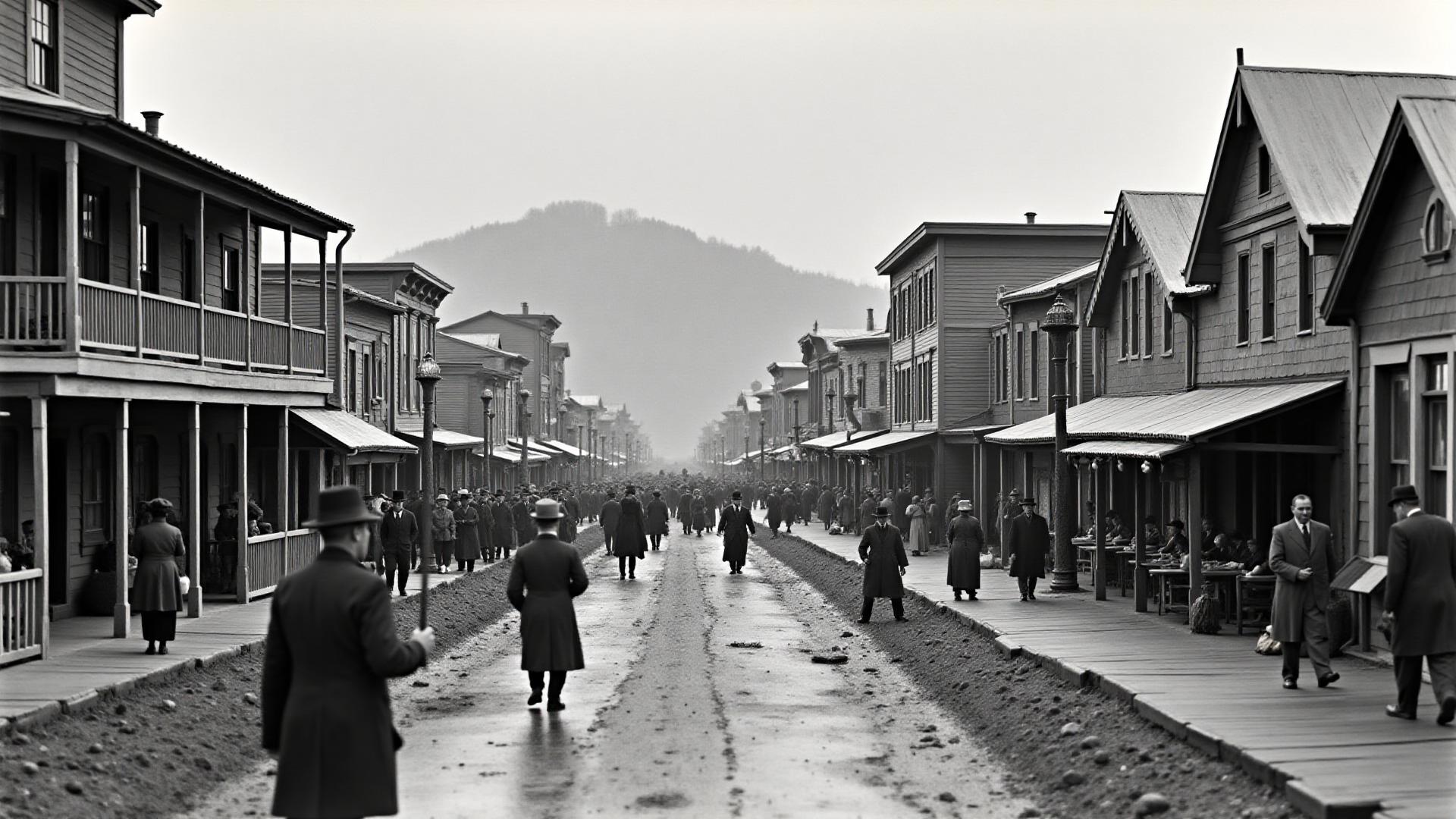Founding & Explosive Growth
Dawson City sprang into being almost overnight. Joe Ladue and Arthur Harper purchased about 178 acres at the confluence of the Klondike and Yukon Rivers, laying out streets and selling lots. This strategic location, at the junction of two major waterways, made it the natural hub for the gold rush.
From roughly 500 residents in 1896, its population (including camps) surged to ~30,000 by 1898; within the town proper, about 17,000 resided. This made Dawson City the largest Canadian city west of Winnipeg during its peak.
Buildings were hastily constructed from wood; there was almost no plumbing, sewerage, or structured sanitation. Streets were muddy in thaw, frozen in winter, and human waste often flowed openly. The town was a chaotic mixture of tents, wooden shacks, and a few more substantial structures.
Costs, Hardships & Daily Strain
Because of remoteness and transport costs, basic goods commanded astronomical prices:
Prices in Dawson City (1898)
- Nails: $28 per pound
- Butter: $5 per can in winter
- Eggs: $1-3 each (when available)
- Fresh produce: Nearly impossible to obtain
- A haircut: $1.50 (equivalent to ~$50 today)
- Hotel room: $1-5 per night
Disease was rampant: scurvy, typhoid, dysentery, and respiratory illnesses took many victims. The design of the town—with too many humans, too little infrastructure, and contaminated water sources—amplified the risks.
Major fires ravaged Dawson repeatedly — notably November 1897, October 1898, and April 1899 — compounding its vulnerabilities. These fires destroyed hundreds of buildings and wiped out fortunes in stored goods.
Culture, Media & Social Order
Despite the chaos, the social life was intense. Saloons, gambling halls, theaters, dance halls, and newspapers flourished. Entertainment was crucial for maintaining morale through the long, dark winters.
One newspaper, the Klondike Nugget, was printed on butcher paper in winter due to plain paper scarcity. The arrival of any newspaper was a major event, with crowds gathering to hear news from the outside world.
Women comprised 8–12% of the population; some traveled alone—remarkable for the era. Many ran boarding houses, cooked for mining parties, or engaged in businesses; others engaged in sex work (with a structured hierarchy). Notable women like Belinda Mulrooney became successful entrepreneurs, building hotels and other businesses.
Law and Order
Law enforcement was handled by the Northwest Mounted Police (NWMP). By 1897 there were ~96 officers, rising to ~288 by 1898. The NWMP enforced "blue laws," regulated vice, and generally kept order.
Remarkably, Dawson had few murders but many arrests for prostitution, gambling, and liquor violations. The strong police presence made Dawson safer than most American mining camps of the era.
Dawson was also hungry for news and entertainment. Rival newspaper teams raced over passes to get printing presses into Dawson. The Nugget at one point sold for $24 annual subscription—a substantial sum.
The town featured legitimate theaters presenting Shakespeare alongside vaudeville acts, libraries with thousands of volumes, churches of various denominations, and even a hospital. Despite its rough exterior, Dawson developed a surprisingly sophisticated cultural life.
